
Question and Answers Forum
Previous in Permutation and Combination Next in Permutation and Combination
Question Number 3884 by Yozzii last updated on 23/Dec/15
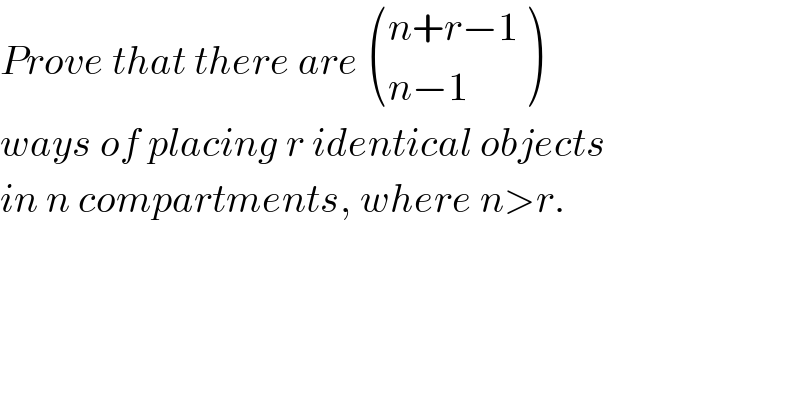
Commented byRasheedSindhi last updated on 24/Dec/15
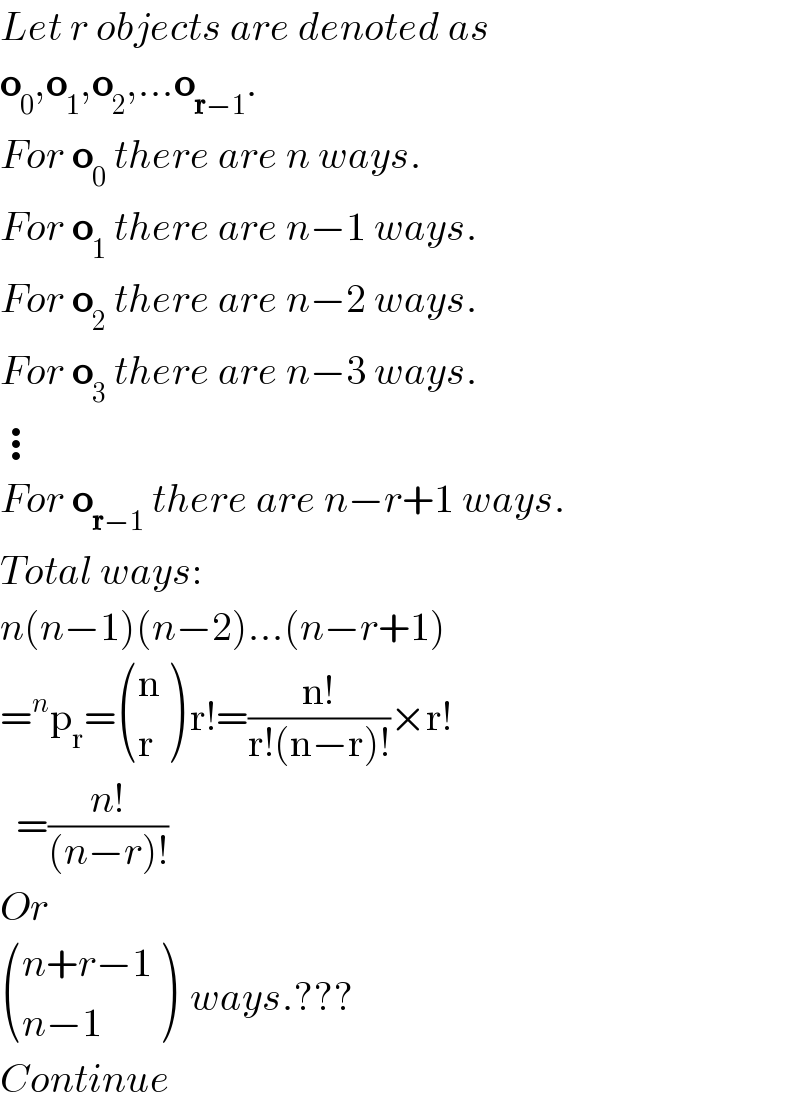
Commented byYozzii last updated on 24/Dec/15
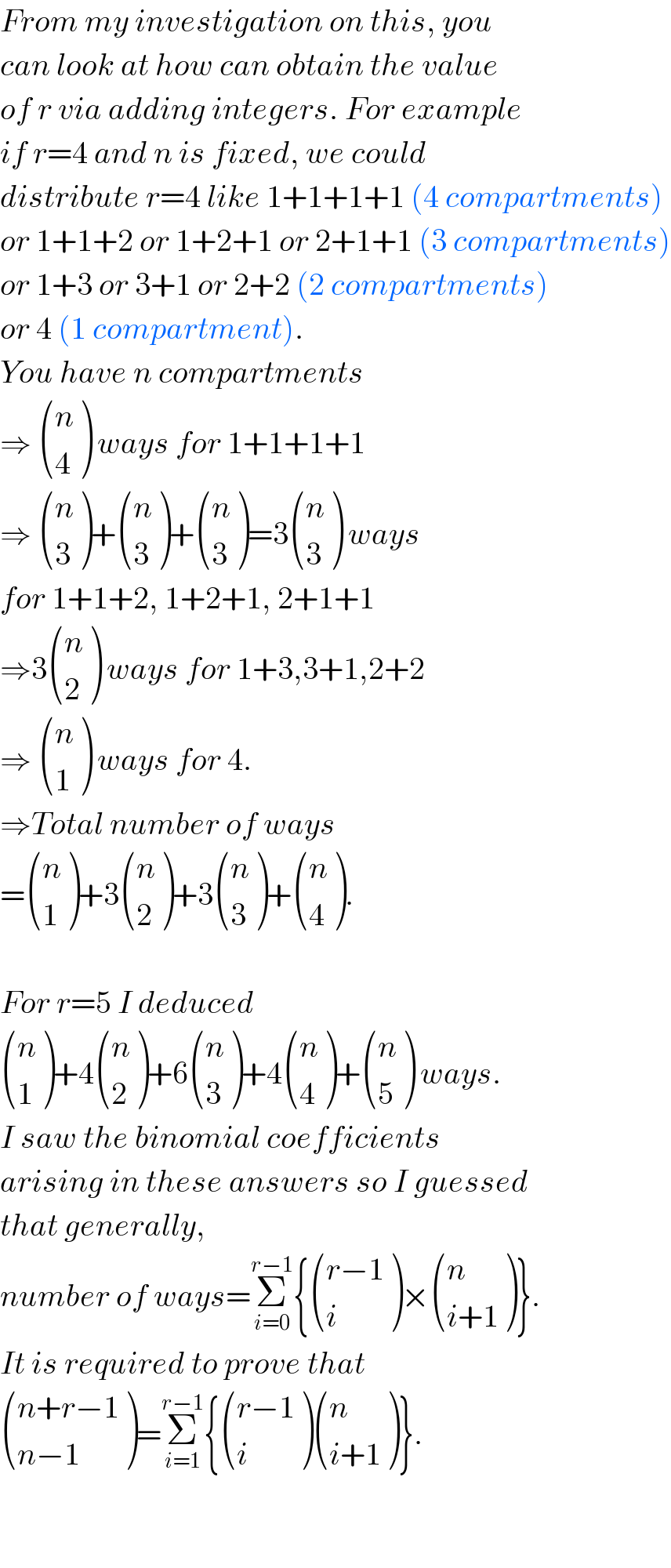
Commented byRasheedSindhi last updated on 24/Dec/15
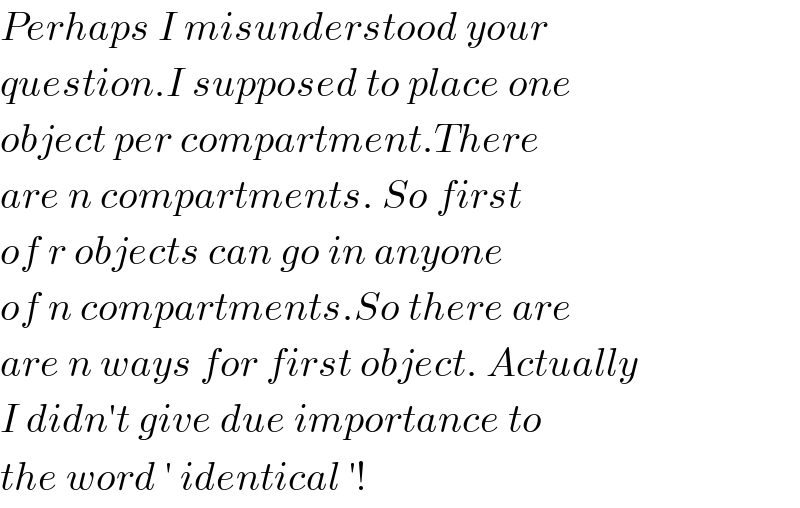
Commented byprakash jain last updated on 24/Dec/15

Answered by prakash jain last updated on 24/Dec/15
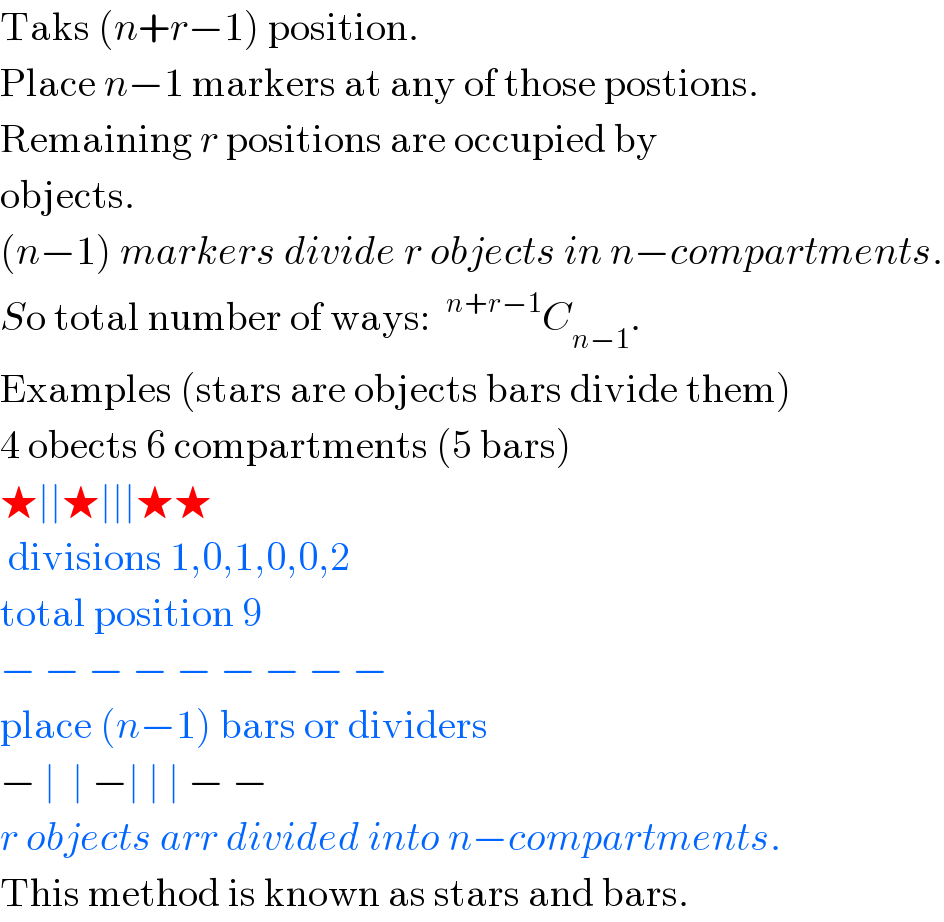
Commented byYozzii last updated on 24/Dec/15
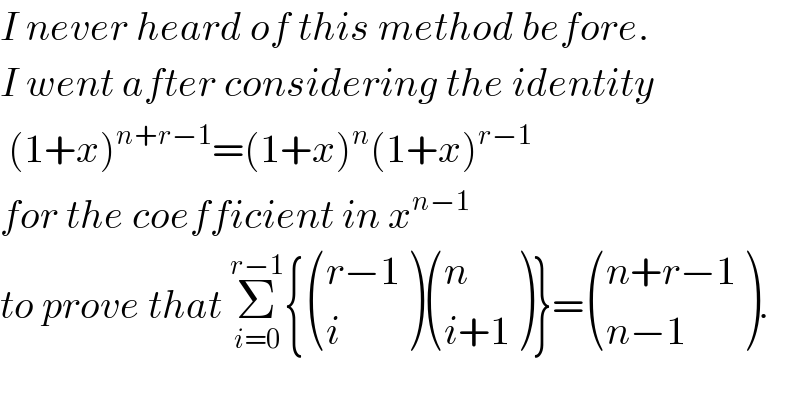
Commented byprakash jain last updated on 24/Dec/15

Commented byYozzii last updated on 24/Dec/15

